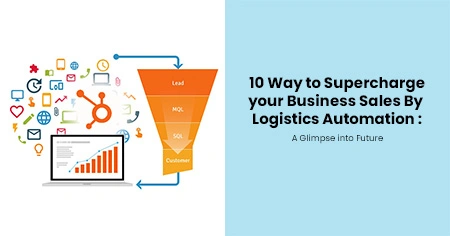The global logistics automation market is predicted to develop at a CAGR of 12.3% between 2024 and 2032, while the Indian logistics automation market is expected to rise at an impressive 14.93% CAGR between 2024 and 2032. The growing number of logistics and storage companies in India is fueling the demand for automated solutions to boost operating speed and efficiency.
Custom logistics software development companies are implementing cutting-edge automation technologies to meet these needs, improve operations, and boost production.
From automated warehouses to self-driving vehicles, technology is transforming the logistics business.
In this post, we'll review the top ten ways to boost your business sales using logistics automation, which you should know.
What is logistics automation?

Logistics automation is the technology that efficiently transports things from their origin (Point A) to your door (Point B).
Artificial intelligence (AI) oversees your order's journey, optimizing everything from planning to storage and quality control. A completely automated system tracks your order to ensure it arrives safely and in good condition.
So, what drives the automation revolution? Robotics, artificial intelligence, and machine learning form a potent technology mix. These tools collaborate to simplify operations such as inventory management, order processing, and truck routing. The result? Businesses save significant time and money while reducing their environmental footprint.
Implementing automation throughout the supply chain improves businesses' efficiency and effectiveness. This results in a crisp bottom line and a sharper competitive edge in the marketplace.
10 Ways to Supercharge Your Business Sales By Logistics Automation
Cut logistics costs with automation
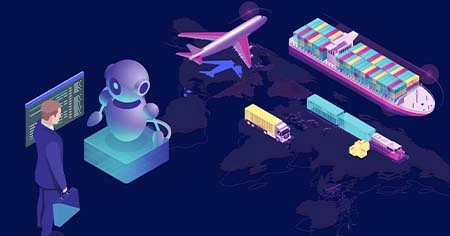
Global competition, surging gasoline prices, and growing labor costs put pressure on corporations to cut operational costs while maintaining profit margins. Logistics automation decreases the need for manual labor, minimizes errors, and optimizes resource allocation, resulting in significant cost reductions to remain competitive.
Logistics automation alleviates this burden by considerably lowering reliance on manual labor through automated technologies such as robotic picking and sorting, decreasing payroll costs. It reduces human error in processes like order picking and packaging, eliminating the need for returns, re-picks, and wasted resources, resulting in significant cost savings. Furthermore, computerized logistics systems improve resource allocation throughout the supply chain. This includes smart load planning and automatically assigning vehicle orders based on size, weight, and destination to ensure efficient loading and lower fuel usage. Route optimization automates route design to reduce travel time and distance, which saves fuel and increases driver productivity. Furthermore, warehouse management integration improves storage space, picking routes, and employee scheduling, reducing wasteful moves and labor expenses.
Offer turn key logistics services
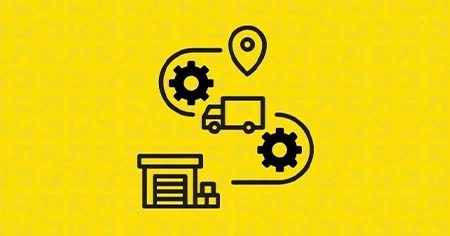
A specialist logistics company with market-specific competence may provide clients with a full range of services, including transportation and inventory management, vendor management, and regulatory compliance.
A custom logistics software development company that conducts the process without involving third parties makes things easier for clients. Clients frequently use logistics services to avoid independently setting up and managing the entire process.
For example, a pharmaceutical logistics company can provide comprehensive services ranging from warehousing and distribution to regulatory compliance. Turnkey services will boost your value proposition if you specialize in a specific area.
Boost efficiency in logistics with automation
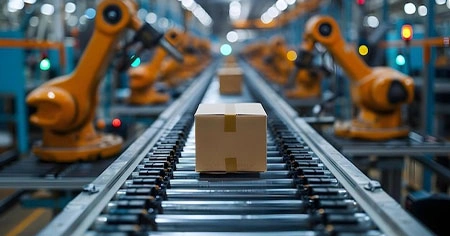
Processes must be streamlined to fulfil rising customer demand and faster delivery expectations. Logistics automation achieves this by automating activities and processes, which speeds up order fulfilment.
Automated systems can process orders, manage inventory, and handle shipments faster than human workers, leading to shorter turnaround times, higher on-time delivery rates, and the ability to handle higher order quantities without sacrificing speed. Furthermore, automated logistics systems automate workflows for various logistics activities, including order entry, inventory management, and shipment tracking.
This eliminates manual data entry and decreases bottlenecks, resulting in more efficient operations and speedier order fulfilment.
Improved accuracy
Automation minimizes the risk of human error since computers and software can perform activities more precisely and consistently than people. This can help custom logistics software development firms reduce errors and waste, resulting in more precise and dependable logistics management.
Faster order processing
Automation tools such as robotic process automation (RPA), warehouse picking systems, and package tracking software enable faster and more error-free order processing. Reduced lead times directly translate into better customer satisfaction and sales.
Examples include:
- Automated conveyors and sorters.
- AI integration to improve order prioritization efficiency.
Maximize productivity with logistics automation
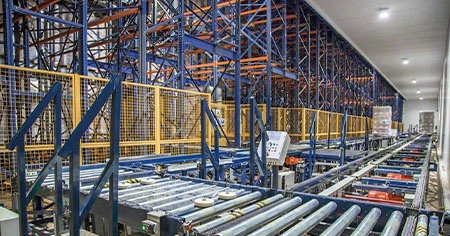
Labour shortages and limited access to skilled labour can impede operational efficiency. Logistics automation maximizes existing resources, resulting in improved productivity levels. Automated systems can work continuously without interruption, doing repetitive activities that would normally necessitate significant human labour.
This allows for 24-hour operations without the constraints of human fatigue, resulting in speedier order processing and distribution throughout the day and night, optimizing production. Automation frees human workers from repetitive chores, allowing them to focus on more strategic and value-added operations. Quality control ensures product quality and package integrity, while process improvement involves examining data and workflows to discover areas for greater automation.
Real-time inventory management
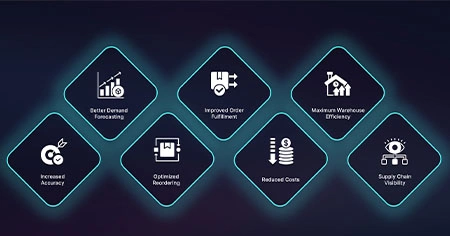
Boost customer satisfaction with logistics automation
Customers worldwide expect prompt, dependable deliveries and consistent service across borders. Increased automation efficiency results in faster order processing and delivery times, exceeding consumer expectations.
Real-time shipment tracking offered by automated logistics systems gives customers up-to-date information about their orders, increasing trust and lowering customer inquiries, resulting in a better customer experience. Automation also allows early communication with clients about probable delays or delivery exceptions, allowing them to alter their plans while reducing irritation. Reduced picking and packaging errors through automation ensure consumers receive the precise products they bought, reducing the need for returns and replacements and increasing customer satisfaction.
Integration of predictive analytics

Automation technologies powered by AI and machine learning evaluate historical and real-time data to forecast trends, client demand, and future supply chain interruptions. This foresight enables organizations to respond proactively, resulting in uninterrupted service and improved revenue.
Optimize resource use with logistics automation
Fluctuating fuel prices and environmental concerns require adequate transportation and resource distribution. A fleet fuel management system helps track fuel consumption, prevent unnecessary idling, and improve overall efficiency. Automated systems optimize logistics resources such as trucks, storage space, and labor.
Automated route planning ensures that cars are used efficiently, reducing idle miles and fuel consumption. This also allows for dynamic route alterations by incorporating real-time traffic data to improve delivery times and resource utilization. Another crucial aspect of logistics automation is optimizing routing for multiple deliveries. For businesses that require drivers to make numerous stops in a single journey, utilizing a delivery route planner with unlimited stops can significantly improve efficiency and reduce operational costs. Advanced planners allow for automatic optimization based on distance, traffic patterns, and required delivery times essential factors highlighted in recent industry reviews of the best free route planners with unlimited stops available in 2025. Integrating such tools into your logistics workflow ensures timely deliveries while maximizing resource utilization.
Conclusion
Logistics automation is increasingly changing the logistics business. By integrating cutting-edge technology such as warehouse automation, transportation management systems, autonomous cars, predictive procurement analytics, and robotic process automation., logistics organizations can increase productivity, save costs, and better serve their clients.




